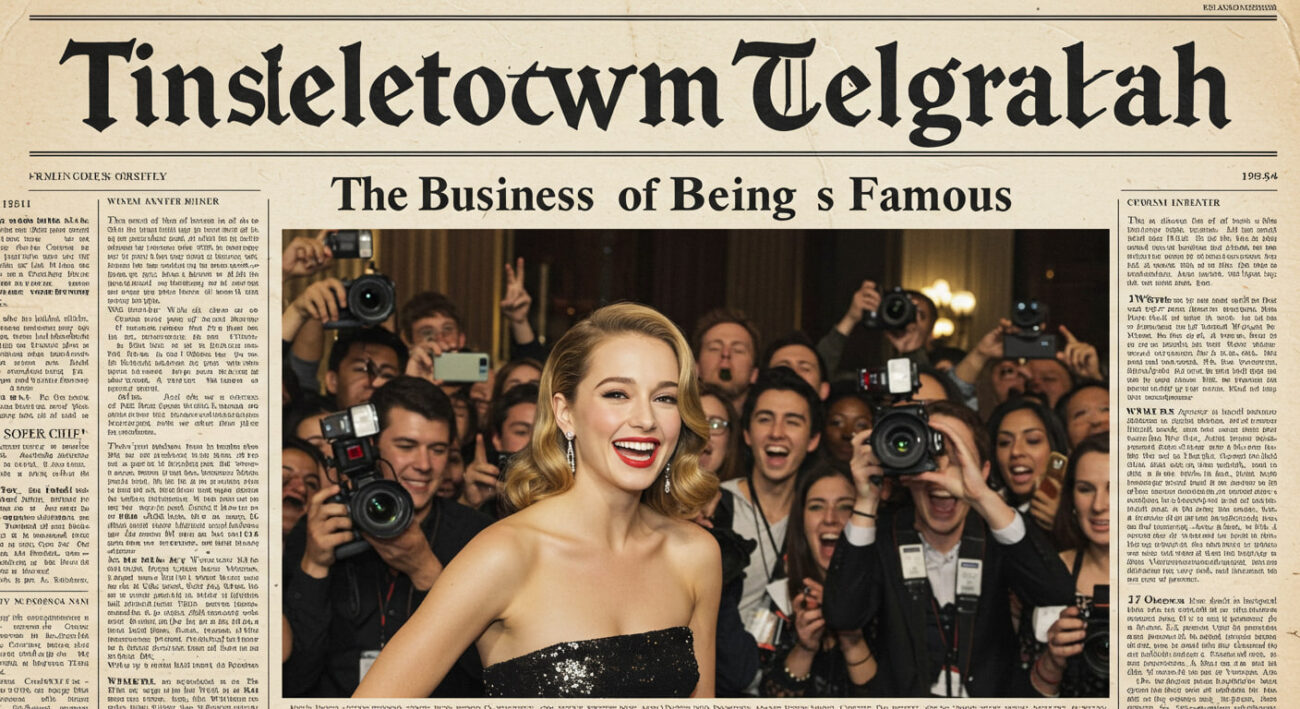In the shimmering mirage of Hollywood, fame has long been perceived as a mystical confluence of talent, beauty, and serendipitous discovery. It’s a narrative lovingly burnished by the industry itself: the wide-eyed ingenue plucked from obscurity, the tortured artist whose genius finally breaks through. But behind this romantic facade lies a far more calculated and relentless reality. In the 21st century, fame is no longer a happy accident; it is a meticulously engineered, multi-platform, and astonishingly lucrative business. Welcome to the modern era of the celebrity as a C-suite executive, where a personal brand is the most valuable asset, and every public move is a calculated entry on a sprawling balance sheet.
The foundational shift in the business of being famous is the transition from fame as a byproduct of a specific talent—acting, singing, athletic prowess—to fame as the primary commodity. Today, a celebrity’s persona is a brand, as carefully constructed and managed as that of any Fortune 500 company.1 This brand is the central hub from which a diverse and ever-expanding portfolio of revenue streams radiates. While traditional income from films, television shows, or record sales remains a significant component, it is often dwarfed by the earnings potential of the celebrity brand itself.
This intricate enterprise is helmed by a team of specialists who function as the celebrity’s corporate board.2 The agent, the traditional dealmaker, is still crucial for securing roles and negotiating contracts.3 However, their focus is often on the immediate, transactional aspects of their client’s career. The manager, on the other hand, is the long-term strategist, the CEO of the celebrity’s brand. They are the architects of the career trajectory, advising on everything from which roles to accept to which philanthropic causes to align with. The publicist, the chief communications officer, crafts the public narrative, managing media appearances, social media presence, and, crucially, mitigating any potential damage to the brand’s image.4 This triumvirate, supported by lawyers and financial advisors, works in concert to maximize the celebrity’s cultural and financial capital.
The evolution of celebrity endorsement deals provides a stark illustration of this paradigm shift. The era of simply holding up a product and smiling for a print ad is long gone. Today’s most successful partnerships are deep, long-term integrations that blur the lines between endorser and entrepreneur. A prime example is the rise of the celebrity-founded or celebrity-invested brand. From Rihanna’s Fenty Beauty, which disrupted the cosmetics industry with its inclusive shade range, to George Clooney’s billion-dollar sale of Casamigos tequila, the modern celebrity is no longer just a face for hire; they are a formidable business force in their own right.5 These ventures are successful not just because of the celebrity’s initial promotional power, but because they are often built on a foundation of authentic personal interest and a deep understanding of their target audience.6
Social media has been the great accelerator in the business of fame, a digital wild west that has both democratized access to celebrity and created unprecedented opportunities for monetization. For the established star, platforms like Instagram, TikTok, and YouTube offer a direct, unfiltered channel to their audience, allowing them to bypass traditional media gatekeepers and cultivate a more personal and seemingly authentic connection.7 This direct line to the consumer is invaluable to brands, who are willing to pay astronomical sums for a single sponsored post that can reach millions of engaged followers.8
For a new generation of digital-native stars, social media is the primary springboard to fame. These influencers and content creators have built their empires from the ground up, turning their lives, their opinions, and their niche interests into highly profitable businesses. They have mastered the art of parasocial relationships, creating a sense of intimacy and trust with their followers that translates directly into purchasing power.
However, the relentless demands of maintaining a successful celebrity brand come at a significant cost, both financial and personal. The overhead for “being famous” can be staggering, encompassing the salaries of the aforementioned team, as well as the expenses for stylists, security, personal trainers, and a lifestyle that must constantly project success. The personal toll is arguably even greater. In an age of constant connectivity, the celebrity is always “on,” their every move scrutinized and commodified. The pressure to maintain a flawless public image, to navigate the treacherous waters of online discourse, and to constantly feed the content machine can lead to burnout, anxiety, and a profound sense of isolation.9
The Tinseltown Telegraph of today sends a clear and unwavering message: fame is no longer a game of chance, but a high-stakes business. It demands not just talent, but a shrewd entrepreneurial spirit, an unyielding work ethic, and a team of savvy operators working tirelessly behind the scenes. The modern celebrity is the ultimate influencer, the quintessential entrepreneur, and the product they are selling, above all else, is themselves. As the lines between art and commerce continue to blur, the business of being famous will only become more sophisticated, more pervasive, and more deeply woven into the fabric of our culture. The curtain has been pulled back, revealing not a magical world of stardust, but a complex and powerful industry in perpetual motion.
